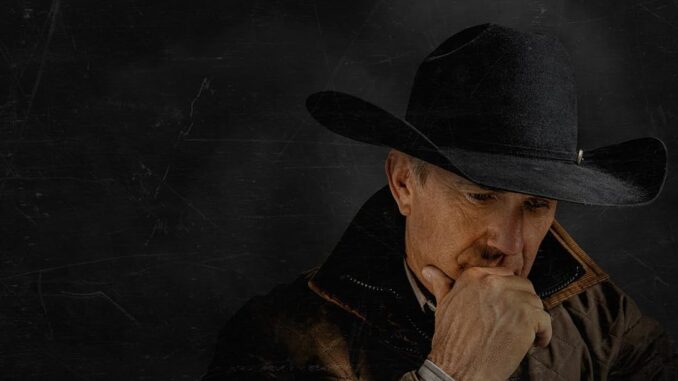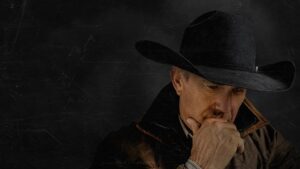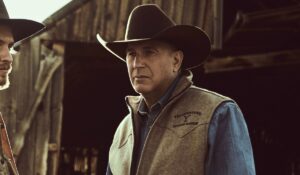
The True Story Behind ‘Yellowstone’s Shocking Cattle Deaths

“Only Devils Left” portrays the dramatic impact of cattle bloat with a mix of accuracy and dramatic flair.
THE BIG PICTURE
– Yellowstone Season 2 accurately depicts the dangerous condition of cattle bloat caused by certain plants, like alfalfa, which can be fatal for grass-fed cows.
– The decision to set the ranch on fire in the show was a practical way to dispose of the dead cattle, but the prevention of alfalfa overgrowth is less logical.
– The dramatic depiction of cattle bloat in Yellowstone adds to the captivating and realistic narratives of the show, combining reality and fantasy for engaging storytelling.
With Yellowstone Season 2 having made its linear debut on CBS, now is the perfect time to get caught up on some of the more technical elements behind the show — primarily the real-life ranch problems regularly facing cattlemen. Season 2, Episode 4, titled “Only Devils Left,” opens with large bales of what looks to be grass being dropped from an airplane under the cover of night. In the bright light of day, Rip (Cole Hauser), Kayce (Luke Grimes), and Jimmy (Jefferson White) discover a grim sight: hundreds of dead and dying cattle for as far as the eye can see. With an emergency call placed to John Dutton III (Kevin Costner), the cowboys start looking for the deadly culprit. Dutton shows up, and they quickly discover alfalfa hay strewn among the dry grass. Dutton remarks that they will likely have to burn the entire field to destroy the cattle remains and the alfalfa hay.
Though Yellowstone does an excellent job of explaining its more technical points, most people need help understanding the inner workings of cattle ranches, including grazing and feeding. Ranching is an incredibly complex industry that involves a deep understanding of livestock and horticulture. For the most part, many ranchers agree that Yellowstone represents the cattle ranching industry with tremendous accuracy, thanks to Taylor Sheridan’s firsthand experience on his family’s ranch growing up. The series gets a lot right, and this episode is an excellent example of how fantastical facts can make for significant dramatic effect.
‘Yellowstone’ Gets the Truth Behind Cattle Bloat (Mostly) Right
So, what even is cattle bloat? Well, not to get too technical, but most of us know cows have a specialized digestive system for breaking down plant material. Cows belong to a group of ruminants, grazing animals with specialized stomachs that ferment hard-to-digest plant materials. Gases are constantly produced as a natural part of digestion, and under normal circumstances, the gas is released without an issue. Sometimes, however, the release of gas is blocked, and a dangerous condition called bloat can occur. The most common culprits of the type of bloat depicted in Yellowstoneare legumes such as clover and alfalfa.
So far, this aligns with the depictions of the hundreds of dying cattle in Yellowstone’s action-packed Season 2 episode. But there is a little more to this story than meets the eye. Alfalfa hay, which the plane dropped on the ranch, rarely causes bloat in cattle who regularly eat it. Even pure alfalfa hay can be ingested by cattle without problems and is commonly fed to beef cattle. Where Yellowstone absolutely got it right, however, is the reaction that these particular cattle had to the alfalfa hay, being grass-fed cows who do not ingest alfalfa of any kind. The shock to their systems would have been immediate and swift and would have caused bloat and, likely, death. The scale on which this occurred, well, that may have been as inflated as those cows, but the cattle bloat phenomenon is accurate, and the circumstances were spot on to trigger that kind of calamity.

Torching the Yellowstone Ranch’s Cattle-Covered Valley Makes Sense
Yellowstone’s “Only Devils Left” would have us believe that setting the pasture ablaze was the worst thing that could have happened. The loss of the cattle was undoubtedly devastating, with over $500,000 in lost revenue, but fire isn’t as bad as you might think. Ranchers often use controlled burns to rid the land of dead vegetation so that wanted grasses can take over and better support grazing livestock. The result of the fire would have been a beneficial cleansing of the land and an abundance of nutrient-rich forage for the cattle. That being said, the manner in which they set the fire causes some concern. Lighting a bone-dry pasture with gargantuan amounts of fuel and flamethrowers doesn’t seem like the best idea for preventing wildfires, but it sure does make for exciting television!
The Yellowstone fire appears to have been set for a couple of reasons. Firstly, to dispose of the hundreds of cattle efficiently, and secondly, to prevent the alfalfa from taking hold. The first reason seems to make more sense than the second. Disposing of that many animals would have been virtually impossible in any other way, so fire makes complete sense. The only other option for getting rid of that many cow bodies would be to dig a massive disposal pit. No, thank you!
However, preventing alfalfa from taking hold isn’t as logical a reason. Though grazing alfalfa can cause cattle bloat, particularly in cattle who do not ingest it regularly, the likelihood of it taking hold is relatively low. In reality, the presence of seeds may be minimal depending on when the alfalfa hay was harvested. Also, alfalfa needs particular conditions in which to thrive. Though some may have taken root, it is not a plant that proliferates quickly without cultivation. The idea that the entire valley would have been overtaken by alfalfa is highly over-dramatized… but still possible.
‘Yellowstone’s Cattle Bloat Plot Delivers Drama and Truth
Yellowstone wouldn’t be the blockbuster show it is without drama lurking around every corner of the Yellowstone Ranch. The Duttons are besieged by adversaries on all sides, and the show does an excellent job of creating captivating and believable narratives based in reality. Cattle bloat death is real, and though the circumstances depicted in the show might not have made those particularly pervasive calamitous effects, they are absolutely possible. The details are impressively accurate, but it’s the big picture that drives the narrative forward and sets the show up for more rivalry-rich drama.
Without the massive loss of cattle and the financial repercussions the ranch faces, Season 2 would seem lacking. Yellowstone keeps the realities of ranch life just real enough while adding the right amount of fantasy to make for captivating drama.
